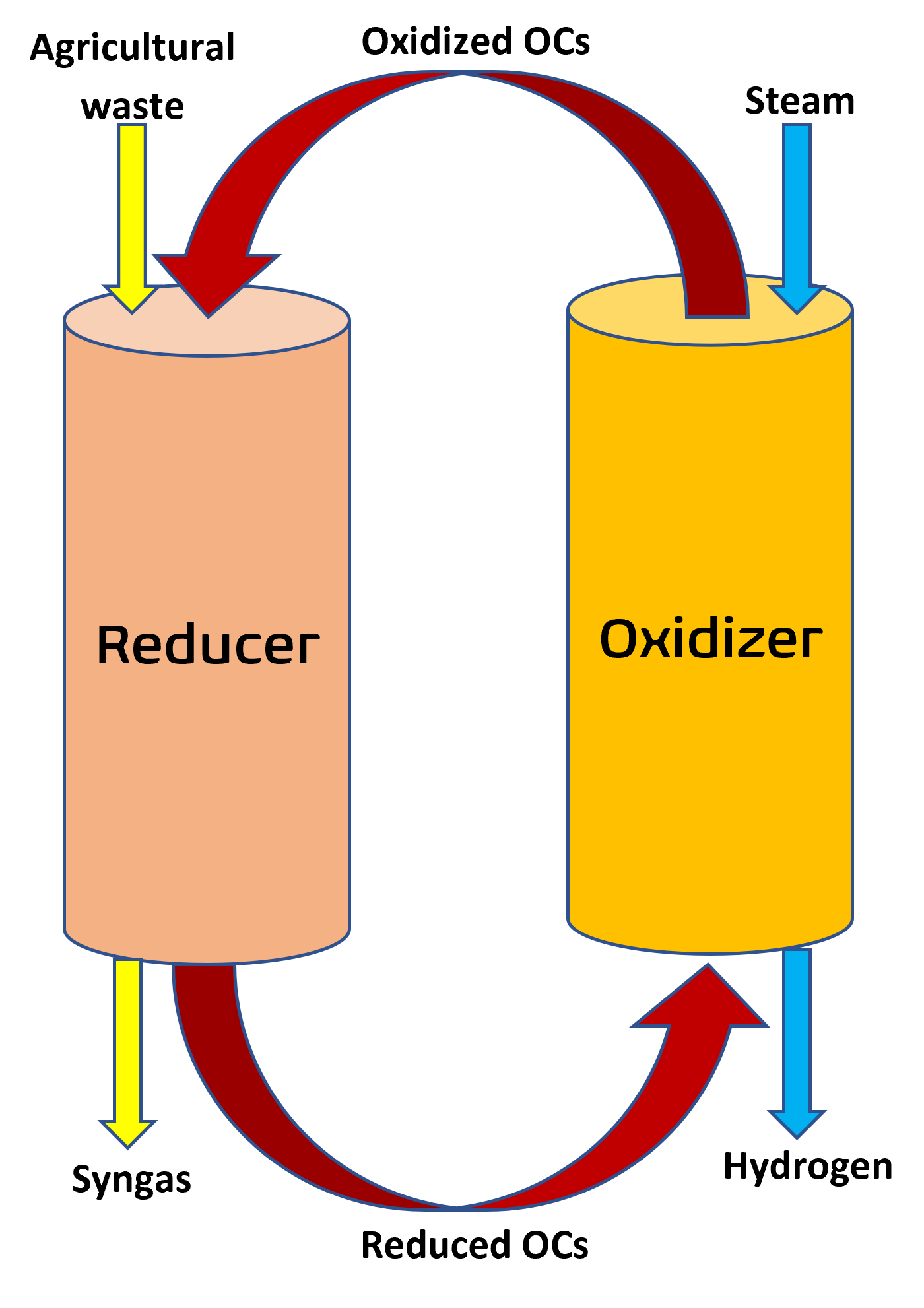The current energy scenario demands extensive research to efficiently produce clean fuels such as hydrogen from renewable energy sources. Hydrogen has proved to be a clean fuel as it produces no greenhouse emissions during its combustion. Traditional hydrogen production has relied on the gasification of fossil fuels through processes such as Coal gasification, Steam Methane Reforming, Autothermal Reforming, etc. However, with the increasing demand for hydrogen and depleting fossil fuels, it is essential to shift hydrogen production towards greener processes that use renewable energy sources. Several attempts have been made to achieve this goal, but these processes have reported lower efficiencies and higher production costs. However, a chemical looping process involving biomass gasification is an excellent alternative for hydrogen production, where the biomass is converted to syngas that can be integrated with the conventionally established pathways to produce molecular hydrogen.
This study aims to produce hydrogen through a chemical looping process that utilizes Calcium Ferrite as an oxygen carrier (OC). The proposed process has a moving bed reactor wherein the biomass and the OC particles are fed co-currently to selectively produce partial oxidation products.
Calcium Ferrite is a redox material with potentially no adverse effects on the environment, making it an attractive alternative for use in chemical looping technology. Due to its fast ionic oxygen transport mechanism, Calcium Ferrite has shown high activity owing to its brownmillerite structure. The thermodynamic properties of calcium ferrite aid in the controlled oxidation of biomass. This favors the production of partial oxidation products of biomass, i.e., Syngas, while the calcium ferrite material itself undergoes reduction to lower oxidation states. Another peculiar advantage of calcium ferrite is its ability to completely regenerate in CO2 or steam, eliminating the air oxidation step required in conventional chemical looping systems and thus reducing the associated costs. The regeneration step produces carbon monoxide or hydrogen based on the regeneration media, which can be further utilized to tailor the syngas produced.
In this system, the biomass and OC particles are fed from the top of the reactor, wherein they flow co-currently downwards. The top portion of the moving bed reactor contains oxidized oxygen carrier particles that react with the freshly added biomass. These particles get reduced on progressing further down through the reactor as they continuously react with biomass volatiles. An enhancer gas is injected from the top to gasify the char. The product syngas is obtained at the bottom of the reactor and sent to the water-gas shift reactor, followed by pressure swing adsorption and acid gas removal unit for hydrogen production. The reduced oxygen carriers then enter the regeneration step, wherein they are oxidized by steam to produce additional hydrogen, along with the complete regeneration of the oxygen carriers.
Initially, process simulations are performed to optimize the system performance, and consequently, the reaction conditions are determined. The experiments are carried out in three significant sets- simulated moving bed experiments to study the feasibility, moving bed bench-scale experiments, and TGA experiments to study regeneration characteristics. The simulated moving bed consists of two layers of OC particles: the lower layer of reduced particles and the upper layer of oxidized OC particles. This arrangement is made to simulate a moving bed system closely. The biomass is fed using a lock hopper system from the top of the reactor. In a moving bed system, the biomass is mixed with the OC particles and fed from the top of the reactor at a controlled rate. The TGA experiments are designed to study the regeneration characteristics of reduced OC particles in CO2 and steam environments. The regeneration step is also replicated in the moving bed system wherein the reduced OC particles and steam move counter-currently for complete regeneration of OC particles. High-purity syngas is obtained with a high H2/CO ratio and fed to the water-gas shift reactor to produce high-purity hydrogen. Hydrogen generation from both steps- Biomass gasification and OC regeneration, can be accounted for a high H2/CO ratio.
Various biomass feedstocks have been studied in the system, and high-purity syngas is obtained in each case, proving the systemâs applicability to different feedstocks. Further selectivity and conversion are improved by adding dopants to the OC material.


